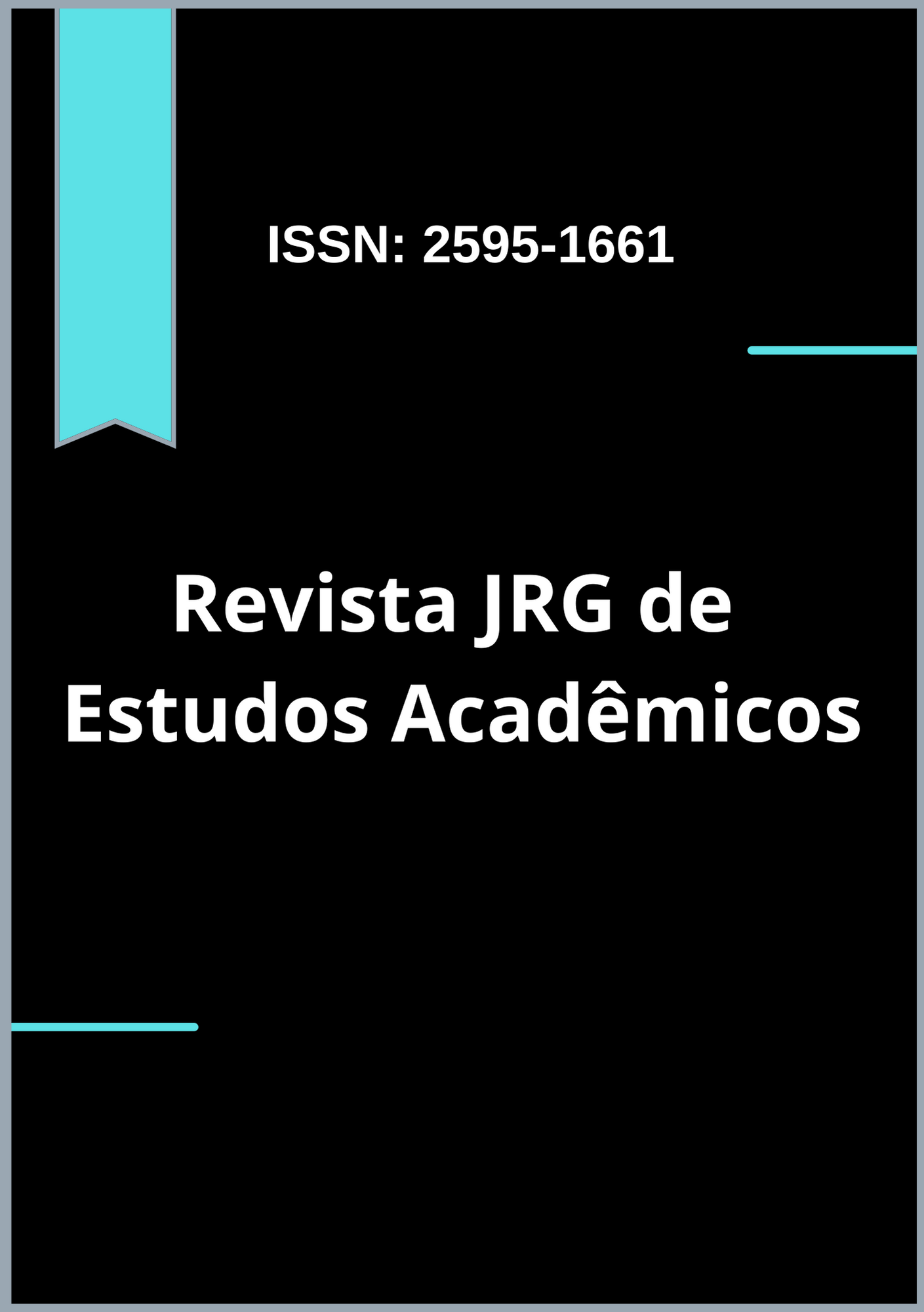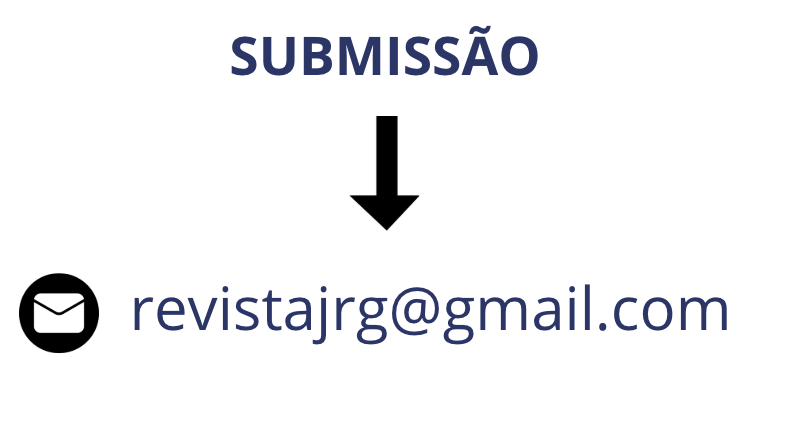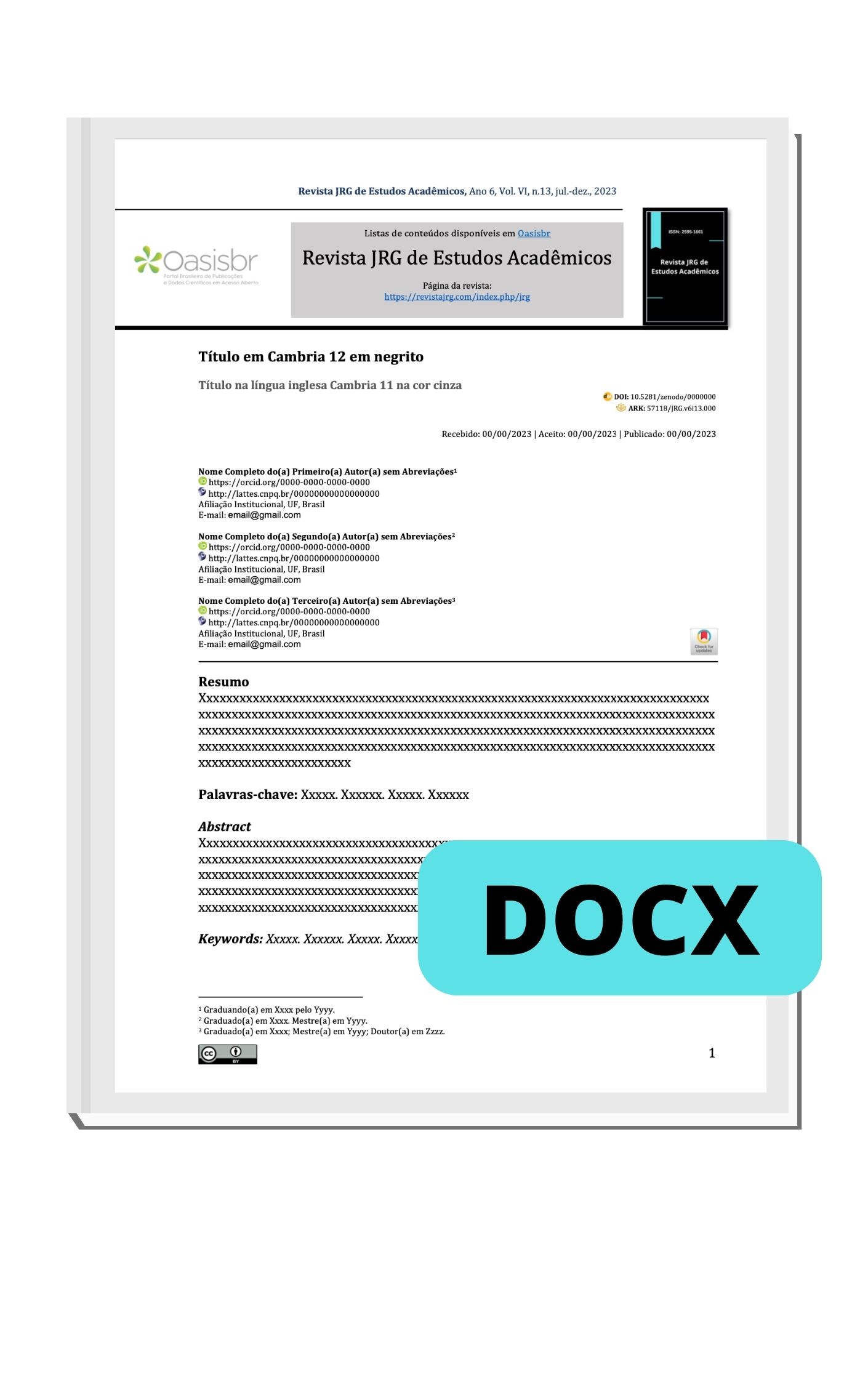Preenchimento com ácido hialurônico na região do ângulo mandibular e seus efeitos funcionais na disfunção temporomandibular: evidências clínicas e biomecânicas
DOI:
https://doi.org/10.55892/jrg.v8i18.2181Palabras clave:
disfunção temporomandibular, ácido hialurônico, preenchimento facial, dor orofacial, biomecânica mandibular, terapias minimamente invasivasResumen
A disfunção temporomandibular (DTM) é uma condição de natureza multifatorial que compromete a função da articulação temporomandibular e das estruturas adjacentes, impactando de forma significativa a qualidade de vida dos pacientes. Dentre as abordagens terapêuticas emergentes, destaca-se o uso do ácido hialurônico, especialmente por meio do preenchimento na região do ângulo mandibular, devido às suas propriedades biomecânicas e bioquímicas. O presente estudo teve como objetivo analisar os efeitos clínicos e funcionais do preenchimento com ácido hialurônico no tratamento da DTM, por meio de uma revisão bibliográfica integrativa baseada em artigos científicos atualizados. Os resultados apontam que o ácido hialurônico apresenta efeitos positivos no alívio da dor, na melhora da amplitude de movimento mandibular, na função muscular e na regeneração articular. Ademais, os benefícios estéticos associados à técnica agregam valor terapêutico e psicológico ao tratamento. Conclui-se que o preenchimento com ácido hialurônico na região do ângulo mandibular configura-se como uma alternativa eficaz, segura e minimamente invasiva para o manejo da DTM, especialmente quando integrada a estratégias multidisciplinares. Recomenda-se, entretanto, a realização de ensaios clínicos randomizados com amostras ampliadas e seguimento longitudinal para validação definitiva de seus efeitos terapêuticos.
Descargas
Citas
ABOUELHUDA, A. M.; KHALIFA, A. K.; KIM, Y. K.; HEGAZY, A. S. Non-invasive different modalities of treatment for temporomandibular disorders: review of literature. Journal of Korean Association of Oral and Maxillofacial Surgeons, v. 44, p. 43-51, 2018.
ARAÚJO, O. Z. M. de; CRUZ, J. H. de A.; OLIVEIRA FILHO, A. A. de; ALVES, M. A. S. G. Tratamento farmacológico e não farmacológico da disfunção temporomandibular: uma revisão da literatura. Archives of Health Investigation, v. 10, n. 2, p. 192-199, 2021. Disponível em: https://doi.org/10.21270/archi.v10i2.4824. Acesso em: 30 maio 2025.
BORBA, A. C. A. et al. Eficácia do uso do laser de baixa potência para o tratamento da DTM: revisão integrativa. Research, Society and Development, v. 10, n. 4, p. 1-9, 2021. Disponível em: http://dx.doi.org/10.33448/rsd-v10i4.13282. Acesso em: 30 maio 2025.
BONTEMPO, K. V.; ZAVANELLI, R. A. Desordem temporomandibular: prevalência e necessidade de tratamento em pacientes portadores de próteses totais duplas. Revista Gaúcha de Odontologia, v. 59, n. 1, p. 87-94, 2011.
CARVALHO, C. da C. A Viscossuplementação com Ácido Hialurônico no Tratamento da Disfunção Temporomandibular. 2020. Dissertação (Mestrado em Medicina Dentária) – Instituto de Ciências da Saúde, 2020.
CARUSO, S. et al. Temporomandibular Joint Anatomy Assessed by CBCT Images. BioMed Research International, v. 2017, p. 1-10, 2017. Disponível em: https://doi.org/10.1155/2017/2916953. Acesso em: 30 maio 2025.
CIPRIANO, M. S. et al. Viscosuplementação de ATM nos tratamentos de DTM: revisão de literatura. Brazilian Journal of Surgery and Clinical Research, v. 36, n. 3, p. 44-48, 2021.
DINIZ, D. A.; FEITOSA, J. G. Tratamento das disfunções temporomandibulares: do diagnóstico ao tratamento conservador. Revista da OARF, v. 3, n. 1, p. 30-35, 2019.
FERREIRA, C. L. P.; SILVA, M. A. M. R.; FELÍCIO, C. M. Sinais e sintomas de desordem temporomandibular em mulheres e homens. CoDAS, v. 28, n. 1, 2016.
GIL, ANTONIO CARLOS. Métodos e técnicas de pesquisa social. 6. ed. São Paulo: Atlas, 2008.
GUARDA-NARDINI, L. et al. Treatment effectiveness of arthrocentesis plus hyaluronic acid injections in different age groups of patients with temporomandibular joint osteoarthritis. Journal of Oral and Maxillofacial Surgery, v. 70, n. 9, p. 2048-2056, 2012.
GREENE, C. S. The etiology of temporomandibular disorders: implications for treatment. Journal of Orofacial Pain, v. 15, n. 2, p. 93-105, 2001.
GROSSMANN, E.; JANUZZI, E.; IWAKI FILHO, L. O uso do hialuronato de sódio no tratamento das disfunções temporomandibulares articulares. Revista Dor, v. 14, n. 4, p. 301-306, 2013.
GROSSMANN, E.; GROSSMANN, T. K. Cirurgia da articulação temporomandibular. Revista Dor, v. 12, n. 2, p. 152-159, 2011. Disponível em: https://doi.org/10.1590/S1806-00132011000200012. Acesso em: 30 maio 2025.
JENNIFER, J.; BUESCHER, M. D. Temporomandibular joint disorders. American Family Physician, v. 76, n. 10, p. 1477-1482, 2007.
KLASSER, G.; GREENE, C. The changing field of temporomandibular disorders: What dentists need to know. Journal of the Canadian Dental Association, v. 75, n. 1, p. 49-53, 2009.
MARZOOK, H. A. M. et al. Intra-articular injection of a mixture of hyaluronic acid and corticosteroid versus arthrocentesis in TMJ internal derangement. Journal of Stomatology Oral and Maxillofacial Surgery, v. 121, n. 1, p. 30-34, 2020. Disponível em: https://doi.org/10.1016/j.jormas.2019.05.003. Acesso em: 30 maio 2025.
MANFREDINI, D.; PICCOTTI, F.; GUARDA-NARDINI, L. Hyaluronic acid in the treatment of TMJ disorders: A systematic review of the literature. Cranio: The Journal of Craniomandibular Practice, v. 28, n. 3, p. 166–176, 2010. Disponível em: https://doi.org/10.1179/crn.2010.023. Acesso em: 30 maio 2025.
MOTTA, L. J. et al. Disfunção Temporomandibular segundo o Nível de Ansiedade em Adolescentes. Psicologia: Teoria e Pesquisa, v. 31, n. 3, p. 389-395, 2015. Disponível em: http://dx.doi.org/10.1590/0102-37722015031899389395. Acesso em: 30 maio 2025.
NUNES JR, P. C.; MACIEL, R. L. R.; BABINSK, M. A. Propriedades anatômicas e funcionais da ATM com aplicabilidade no tratamento fisioterapêutico. Fisioterapia Brasil, v. 6, n. 5, p. 381-387, 2005. Disponível em: https://doi.org/10.33233/fb.v6i5.2027. Acesso em: 30 maio 2025.
OLIVEIRA, L. E. A. de; BRÍGIDO, J. A.; SALDANHA, A. D. D. Effects of the hyaluronic acid infiltration in the treatment of internal temporomandibular joint disorders. Brazilian Journal of Pain, v. 2, n. 2, p. 182-186, 2019.
OKESON, J. P. Management of temporomandibular disorders and occlusion. E-Book. Elsevier Health Sciences, 2019.
PAULINO, M. R. et al. Prevalência de sinais e sintomas de disfunção temporomandibular em estudantes pré-vestibulandos: associação de fatores emocionais, hábitos parafuncionais e impacto na qualidade de vida. Ciência & Saúde Coletiva, v. 23, n. 1, p. 173-186, 2018.
PEREIRA, F. F. et al. Camadas da face e mudanças associadas com o envelhecimento facial. Aesthetic Orofacial Science, v. 2, n. 2, p. 129-143, 2021. Disponível em: https://doi.org/10.51670/aos.v2i2.70. Acesso em: 30 maio 2025.
PORTERO, P. P. et al. Placas oclusais no tratamento da disfunção temporomandibular (DTM). Revista Gestão & Saúde, v. 1, n. 1, p. 36-40, 2009.
REID, K. I.; GREENE, C. S. Diagnosis and treatment of temporomandibular disorders: an ethical analysis of current practices. Journal of Oral Rehabilitation, v. 40, n. 7, p. 546-561, 2013. Disponível em: https://doi.org/10.1111/joor.12067. Acesso em: 30 maio 2025.
RIZZOLO, R.; MADEIRA, M. Anatomia Facial com fundamentos de anatomia sistêmica geral. Sarvier, 2006.
SAVA, A.; SCUTARIU, M. Functional anatomy of the temporo-mandibular joint (II). *Revista Medico-Chirurgicala a Societatii de Medici











































